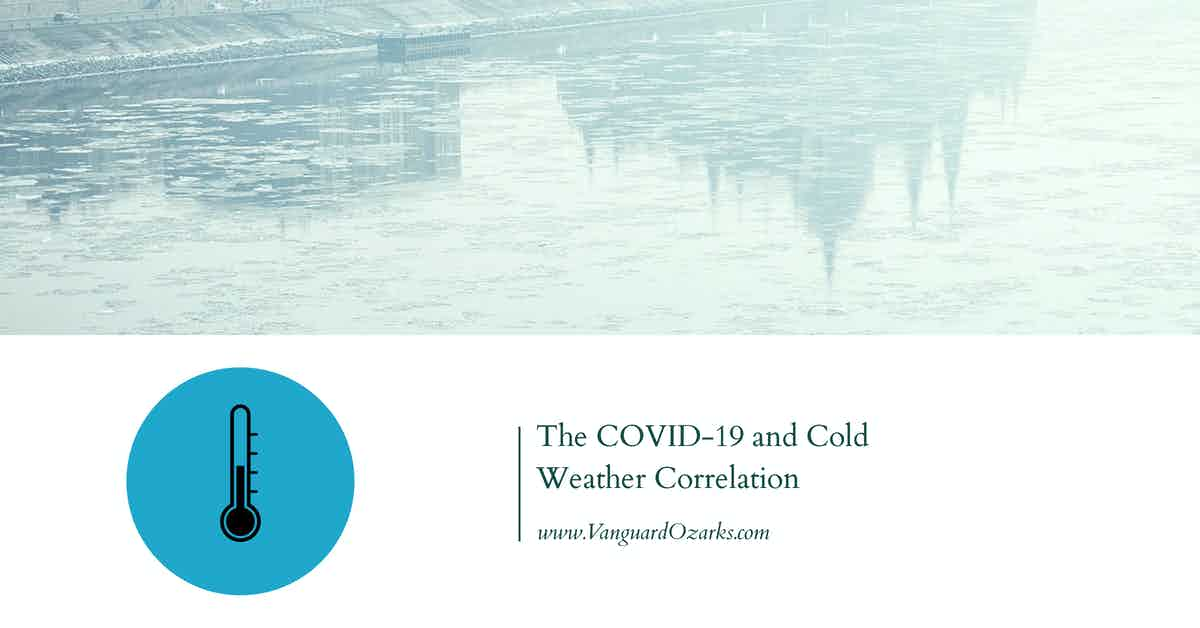Recently, speculation has begun to circulate regarding a correlation between increased cases of COVID-19 and colder temperatures in the Northern Hemisphere.

The Correlation Between Increased COVID-19 Cases and Cold Weather
Does cold weather impact the spread of influenza, norovirus, the common cold, and COVID-19?
Yes, but also no.
The transmission rate of Human Coronaviruses (HCoV), including SARS-CoV-2, Influenza, and Norovirus spikes during the winter months.
And while a correlation between the seasonality of the viruses and cooler weather may exist, specifically regarding survivability rates, current research suggests the spike in transmission rates has little to do with colder outdoor temperatures.
However, decreases in relative humidity associated with decreasing temperatures have been shown in recent lab experiments to correlate to increased infection rates.
The relationship between climatic factors and COVID‐19 cases in New South Wales, Australia was investigated during both the exponential and declining phases of the epidemic in 2020, and in different regions.
Increased relative humidity was associated with decreased cases in both epidemic phases, and a consistent negative relationship was found between relative humidity and cases.
Overall, a decrease in relative humidity of 1% was associated with an increase in cases of 7–8%.
Overall, we found no relationship with between cases and temperature, rainfall or wind speed.
Humidity is a consistent climatic factor contributing to SARS‐CoV‐2 transmission
Additionally, cold weather drives specific human actions that can increase the rate of transmission during the winter, specifically:
- More time indoors.
- Reduced ventilation.
- Increased time in close settings with others, and;
- Less direct sunlight.
Understanding SARS-CoV-2 Common Transmission Methods
SARS-CoV-2 is most commonly spread via the inhalation of contaminated particles expelled from an infected person when coughing or sneezing and less typically while breathing.
Transmission rates are far higher when a person stands too close to an infected person for too long.
Transmission rates increase during the winter due to cold temperatures and the corresponding decrease in humidity, drying out the mucus membranes in the nose, which is the body's first line of defense against airborne pathogens.
Second to direct and close-contact human-to-human transmission is surface-to-human transmission, which occurs when a person touches a contaminated surface and then their eyes, nose, or mouth, and usually occurs in facilities with irregular cleaning practices or where high-touch surface disinfection is not practiced.
Lastly, fecal-to-oral transmission occurs in restrooms due to toilet plumes, but may also be related to poor handwashing practices and low-quality facility hygiene.
Methods for Decreasing Risk During Winter Months
Colder weather translates into more time indoors, and the holidays mean an increased amount of time in close quarters with others.
Methods for protecting yourself and others from the spread of SARS-CoV-2, the cold, influenza, and other illnesses involve:
- Using a humidifier.
- Consider using drug-free saline for your nose to keep the membranes moist.
- Increasing indoor ventilation.
- Regularly washing your hands with soap and water.
- Staying home when you're sick.
- Avoiding close contact with sick people where possible.
- Covering your mouth and nose when you cough or sneeze, and;
- Cleaning well and often using EPA-approved cleaning and disinfection products, especially in high-traffic facilities, on high-contact surfaces, and in facilities housing high-risk occupants.
References & Resources
- Cold Weather And The Spread Of COVID-19
- How COVID-19 Spreads
- How Does Coronavirus Spread?
- How does cold weather impact the spread, survival of the flu virus?
- Why do colds and flu strike in winter?
Takeaway
Colds, the flu, and SARS-CoV-2 spread all year long.
Temperatures may have a direct impact on the pathogen's survivability rate outside of the human body, but a more direct correlation between winter cold and increased rates of transmission is the decrease in relative humidity and the resulting dryness of mucus membranes in the human nose.
While the risk of infection cannot be removed entirely, it can be mitigated through enhanced cleaning services that focus on holistic occupant health, which means safer, more effective products approved by the EPA and appropriate for use on the surfaces unique to your building's needs, increased facility ventilation, and touchpoint identification and disinfection.
Outsourcing to a highly trained and dedicated service provider is a proven method for ensuring the highest cleanliness and safety standards.
Contact us today and discover why Vanguard Cleaning Systems® is the Standard of Clean® for businesses throughout Northwest Arkansas, Missouri, and Oklahoma.
In Oklahoma, dial 918-960-4450
In Arkansas, dial 479-717-2410
In Missouri, dial 417-812-9777
